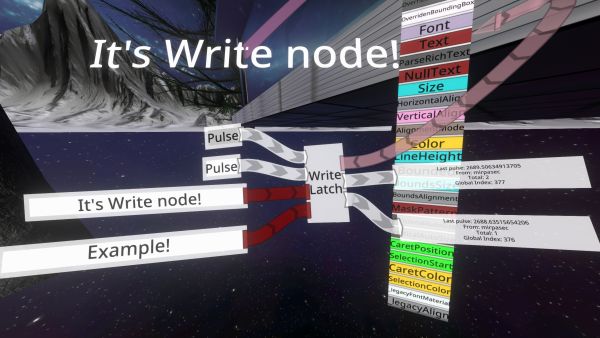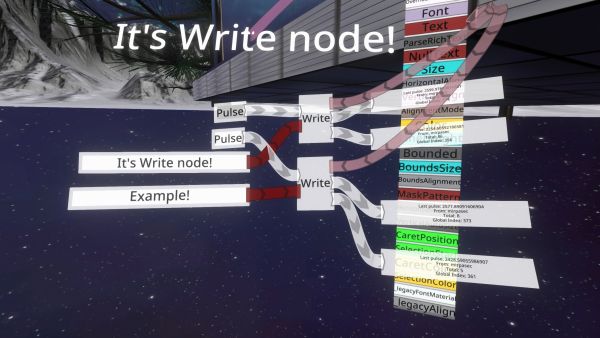Difference between revisions of "Write Latch (LogiX node)"
(Marked this version for translation) |
|||
| Line 60: | Line 60: | ||
== Examples == <!--T:7--> | == Examples == <!--T:7--> | ||
| + | [[File:LogiX.Actions.WriteLatch.Example.jpg|600px|Example of Write Latch]] | ||
| + | == Examples : Equals way == <!--T:8--> | ||
| + | [[File:LogiX.Actions.Write.imp_WriteLatch.jpg|600px|Implement Write Latch node by Write node]] | ||
| − | == Node Menu == <!--T: | + | == Node Menu == <!--T:9--> |
</translate> | </translate> | ||
Revision as of 17:38, 24 September 2020
The Write Latch node overwrites the referenced Target value with the input SetValue or ResetValue when an impulse is received at Set or Reset respectively.
Inputs & Outputs
| Color | Label | Type |
| Set | Impulse | |
| Reset | Impulse | |
| SetValue | (dummy) | |
| ResetValue | (dummy) |
| Color | Label | Type |
| Target | IValue<T> | |
| OnSet | Impulse | |
| OnReset | Impulse |
Usage
When spawned from the node browser the Set/ResetValue input has a dummy (or undetermined) type - this will change to match the input data type when a valid input is connected. The SetValue and ResetValue input type, as well as the referenced Target, must match.
Writing a value with the Write Latch node synchronizes the value across all users in a world. Hence each time this node operates some information must be passed over the network between users. Typically this is negligible (unless writing absolutely huge strings). However, if a large number of writes are occurring it can incur significant network load which may result in lag. If a LogiX setup requires a value to be changing very rapidly and/or continuously, consider driving it directly rather than writing every new value.
Examples
Examples : Equals way
Node Menu
| Actions | ||||||
|---|---|---|---|---|---|---|
| Back | -- | ++ | Drive | Drive Playback | Tween | Write |
| Write Latch | Write Ref | Write Ref Latch | ||||

